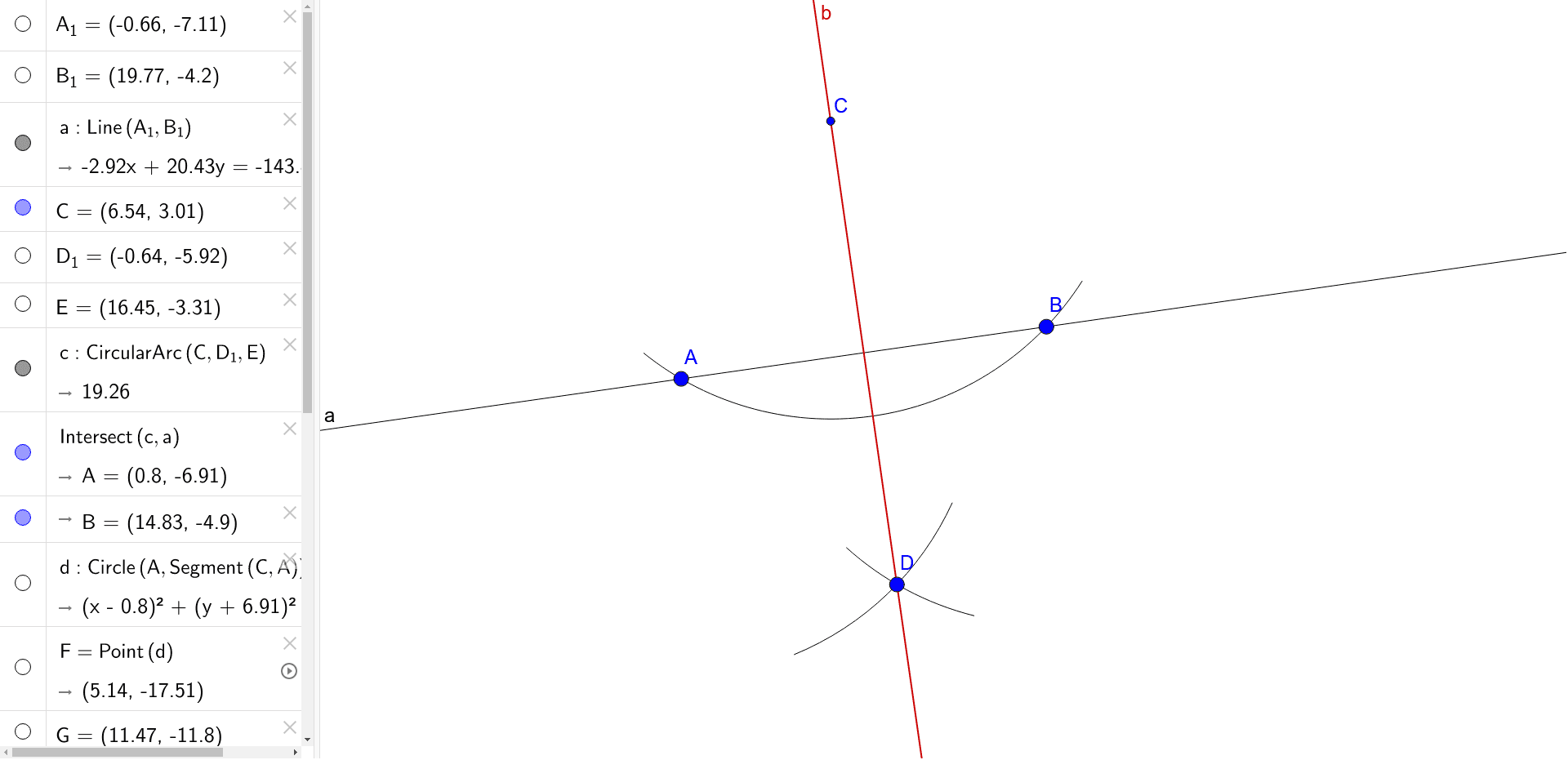Free mathematics software for learning and teaching. This package provides GeoGebra. GeoGebra is free and multi-platform dynamic mathematics software for all levels of education that joins geometry, algebra, tables, graphing, statistics and calculus in one easy-to-use package.
Mind Map Description
Interactive Mind Map based on Online: GeoGebra 4.2 Help Document.
GeoGebra
GeoGebra is an interactive geometry software for education in schools. Most parts of GeoGebra are free software. GeoGebra is written in Java and thus available for multiple platforms.
Its creator, Markus Hohenwarter, started the project in 2001 at the University of Salzburg, continuing it at Florida Atlantic University (2006–2008), Florida State University (2008–2009), and now at the University of Linz together with the help of open-source developers and translators all over the world.Source: Wikipedia, GeoGebra.
GeoGebra is dynamic geometry software. Constructions can be made with points, vectors, segments, lines, polygons, conic sections, and functions. All of them can be changed dynamically afterwards.
Elements can be entered and modified directly on screen, or through the Input Bar. GeoGebra has the ability to use variables for numbers, vectors and points, find derivatives and integrals of functions and has a full complement of commands like Root or Extremum. Teachers can use GeoGebra to make conjectures and prove geometric theorems.
Graphic organizers
Graphic organizers are visual representations of knowledge, concepts or ideas.
Mindmap Instructions:
To see a note, hover over a note button above.
To scroll the mindmap above, click and drag the map's background and move it around , or click on background and use the arrow keys.
To link to another page, click a link button above.
To Fold/Unfold a node, click the node or right click a Node and select Fold/Unfold all from Node.
ToZoom: click the map's background and move the mouse scroll wheel up or down to zoom In or Out
Buttons above:Search,Go to,Zoom in or CTRL '+',Zoom out or CTRL '-', Reset (center), Shadow On/Off,
- There was a problem previewing GEOGEBRATutorial.pdf.
- Q.2 Ex.7.4 Class 9. Cubes animation; Pythagoras' Theorem -Area dissection 2; Desargues II Locked.
Tutorial:New features of Version 4.2
GeoGebra 4.2 will be released soon. 21 developers have contributed to this release, so there are many new and exciting features to explore and enjoy! Here are some of the things you can look forward to, and details of how to try out the Release Candidate are here.
Speed & Stability
As well as the usual bug-fixing and adding features, while developing version 4.2 we have rewritten large parts of GeoGebra so that it will be much more stable and also faster (much faster in some cases) than previous versions.In particular, the following will be much faster:
- anything using the Sequence command
- the following commands when used on polynomials: Derivative/Integral/Tangent/Degree/Coefficients/Expand
Here is an example of a file using Derivative[ ] that is much faster in GeoGebra 4.2.
Here is a demonstration of volume of revolution running in GeoGebra 4 and here is the same file in GeoGebra 4.2. Drag the red point marked “View3D” to see how much faster it is.

CAS View
The long awaited view for symbolic calculations is here. It allows you to symbolically factor, expand, differentiate or integrate expressions that may include parameters, and it is dynamically connected to all the other views. The documentation is available at CAS View.
Here is an example showing how the CAS View interacts with the Graphics View.
Drag the points A, B, C to see the exact calculation of the coordinates change.
Features
The feature that’s taken the most programming time in this release is that worksheets can now be viewed on devices without Java (eg iPads, Android Tablets, Chromebooks). The best way to make use of this is to upload your applets to GeoGebra (File -> Share) and then the conversion will be done automatically.
At the moment only the Graphics View is supported. You can test how worksheets will look and behave on tablets by adding ?mobile=true on the end of the URL in GeoGebra, eg:
http://www.geogebra.org/student/m20510?mobile=trueTools
The Pen Tool has been enhanced so that it now creates a PolyLine rather than drawing to a bitmap. Together with new Delete Tool (drag a “rubber” to delete) it’s now much easier & better to use.
You can now drag a parabola, but keep its vertex fixed. Just hold down Alt when dragging!
The Rigid Polygon Tool has been enhanced with a small but useful feature: simply click on a polygon to make a “rigid” copy of it (ie the copy can be rotated and translated by dragging)
Neel Shah, as part of Google Summer of Code, has programmed some shape recognition algorithms for the Freehand Shape Tool, which will recognize circles, lines, line segments, triangles and quadrilaterals. It works very well on an interactive whiteboard (IWB).
You may also check details of the hundreds of changes in the GeoGebra 4.2 Release Notes.

Power
Kai Chung Tam has programmed the PSLQ algorithm for us in Java which allows a Surd to be numerically reconstructed from a decimal. So for example SurdText[2.414213562373095] returns a nice FormulaText ie sqrt{2}+1. See here for an example.
We have made it much easier to make worksheets with slopefields and the particular integral like this.
All you need to type is:f(x,y)=x/y
SlopeField[f]
A=(1,1)
Locus[A,f]
Geogebra 4.2
If you need more control over the spacing, there are some options, see the SlopeField Command in the manual.
Geogebra 4d
A new command has been added: LocusEquation. This will calculate the equation of a (geometrical) locus using Gröbner bases.
For example. here is the (numerical) locus of a parabola with the calculated (exact) locus overlaid.